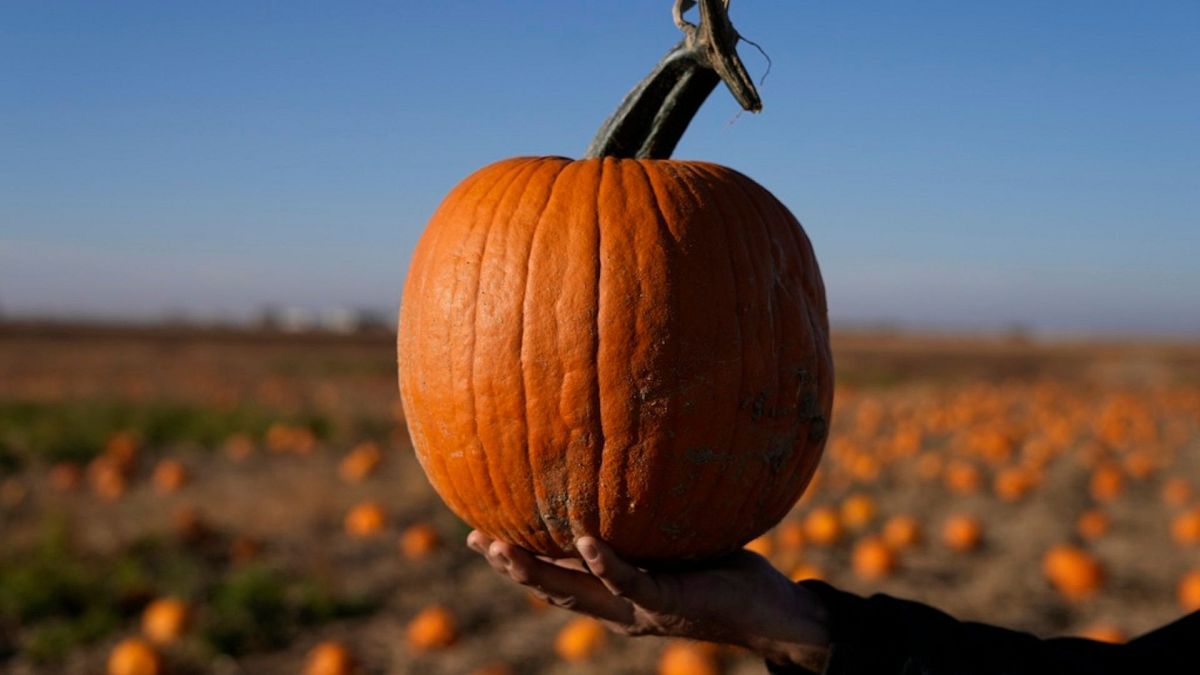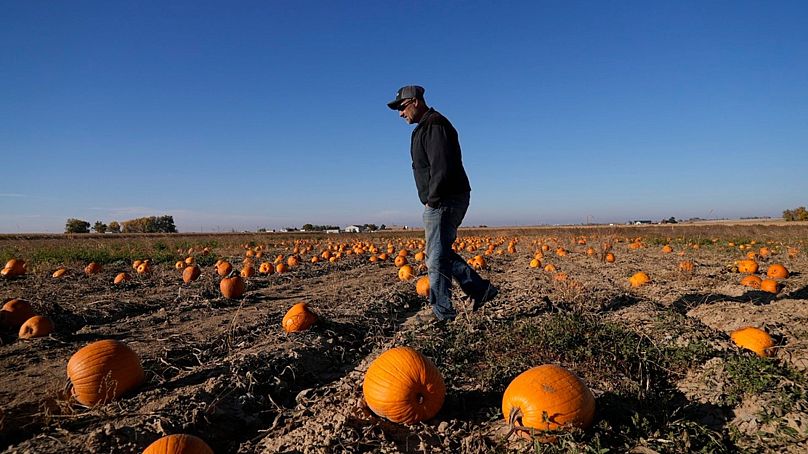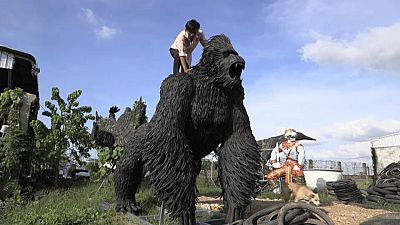Will climate change make Halloween pumpkins a thing of the past? US farmers say there's 'no future' for their trade.
“There’s no future after me,” says Colorado pumpkin farmer Alan Mazzotti. “My boys won’t farm.”
He'll keep farming pumpkins for a bit longer, but water shortages, climate change and spiralling costs are making his livelihood untenable.
Some farmers lost 20 per cent or more of their predicted yields this year.
The decimated crop was a reminder of the water challenges hitting agriculture across the southwest and west of the country as human-caused emissions exacerbate drought and heat extremes.
Farmers who rely on irrigation are being forced to make choices, based on water allotments and the cost of electricity to pump it out of the ground, about which acres to plant and which crops they can gamble on to make it through hotter and drier summers.
Will pumpkins survive on a warming planet?
Pumpkins can survive hot, dry weather to an extent. But this summer's heat, which broke world records and brought temperatures well over 38C to fields across the US, proved too much.
“It’s one of the worst years we’ve had in several years,” says Mark Carroll, a Texas A&M extension agent for Floyd County, which he calls the “pumpkin capital” of the state.
Not only did the hot, dry weather surpass what irrigation could make up for, but pumpkins also need cooler weather to be harvested or they'll start to decompose during the shipping process, sometimes disintegrating before they even arrive at stores.
America’s pumpkin powerhouse, Illinois, had a successful harvest on par with the last two years, according to the Illinois Farm Bureau. But this year it was so hot into the harvest season in Texas that farmers had to decide whether to risk cutting pumpkins off the vines at the usual time or wait and miss the start of the autumn pumpkin rush.
Adding to the problem, irrigation costs more as groundwater levels continue to drop - driving some farmers' energy bills to pump water into the thousands of dollars every month.
Labor costs and inflation are also narrowing margins, hitting farmers' ability to profit off what they sell to garden centres and pumpkin patches.
How are water shortages affecting American farmers?
Mazzotti can see the Rocky Mountains about 50 kilometres west of his pumpkin patch in northeast Colorado on a clear day. The snow was abundant last winter, but one season of above-average snowfall wasn't enough to refill the dwindling reservoir he relies on to irrigate his pumpkins.
He received news this spring that his water delivery would be about half of what it was from the previous season, so he planted just half of his typical pumpkin crop. Then heavy rains in May and June brought plenty of water and turned fields into a muddy mess, preventing any additional planting.
“By the time it started raining and the rain started to affect our reservoir supplies and everything else, it was just too late for this year,” Mazzotti says.
Steven Ness, who grows pinto beans and pumpkins in central New Mexico, says the rising cost of irrigation as groundwater dwindles is an issue across the board for farmers in the region. That can inform what farmers choose to grow, because if corn and pumpkins use about the same amount of water, they might get more money per acre for selling pumpkins, a more lucrative crop.
But at the end of the day, "our real problem is groundwater,... the lack of deep moisture and the lack of water in the aquifer,” Ness says. That's a problem that likely won't go away because aquifers can take hundreds or thousands of years to refill after overuse, and climate change is reducing the very rain and snow needed to recharge them in the arid West.
Labour costs are adding to farmers' struggles
Mazzotti says that without enough water, you “might as well not farm” - but even so, he sees labour as the bigger issue. Farmers in Colorado have been dealing with water cutbacks for a long time, and they're used to it.
However, pumpkins can't be harvested by machine like corn can, so they require lots of people to determine they're ripe, cut them off the vines and prepare them for shipping.
He hires guest workers through the H-2A (Temporary Agricultural Employment of Foreign Workers) programme, but Colorado recently instituted a law ensuring farmworkers to be paid overtime - something most states don't require. That makes it tough to maintain competitive prices with places where labourers are paid less, and the increasing costs of irrigation and supplies stack onto that, creating what Mazzotti calls a “no-win situation”.




